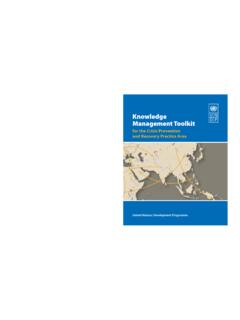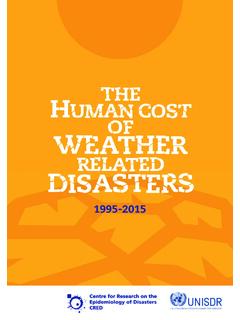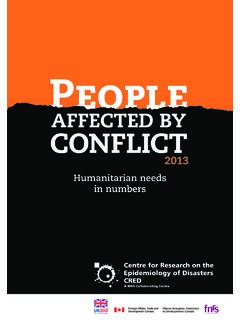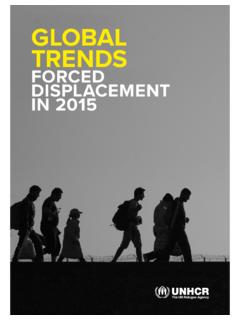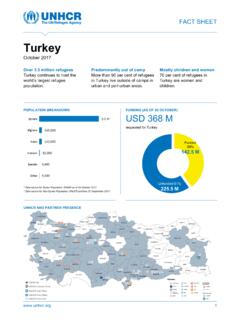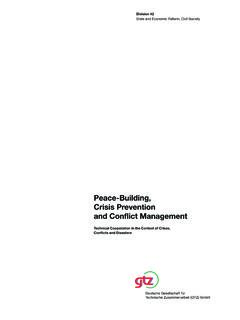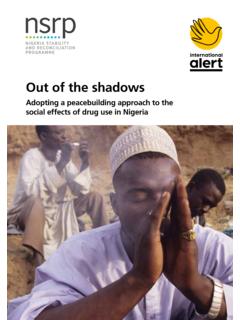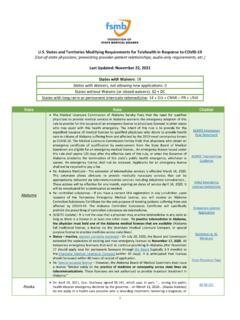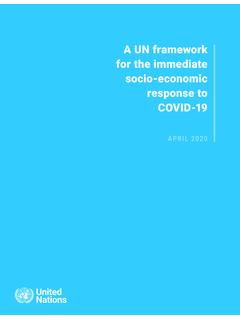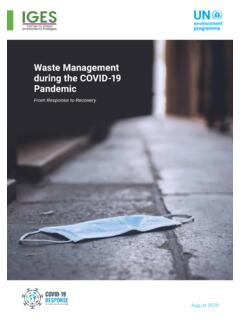Transcription of PHILIPPINES COVID-19 RESPONSE PLAN COVID-19 …
1 1 PHILIPPINES COVID- 19 response PLANCOVID-19 HUMANITARIAN RESPONSE PLANPHILIPPINESM arch 2020 - March 2021 Photo Credit: World Vision/Joy Maluyo2 PHILIPPINES COVID- 19 response PLANR esponse Plan OverviewPEOPLE IN NEEDPEOPLE TARGETEDREQUIREMENTS (US$) ManilaTarget Priority AreasSTRATEGIC PRIORITIESS upport the Government of the PHILIPPINES in containing the spread of the COVID-19 pandemic and decrease morbidity and government RESPONSE efforts to decrease the deterioration of human assets and rights, social cohesion and , assist and advocate for displaced people, indigenous peoples, vulnerable population, and marginalized communities particularly vulnerable to the ShelterHealth inc. SRHFood Security& AgricultureWASHN utritionProtection and GBVCamp Coordination& Camp ManagementEarly Recovery3 PHILIPPINES COVID- 19 response PLANWe have found ourselves in a global battle, with all of humanity facing a common enemy, the new coronavirus disease.
2 By now, the pandemic has tragically taken hundreds of thousands of lives, infected millions of people and upended the global economy. The impact for us all is far-reaching, and the consequences will reverberate well into the than ever, the United Nations need to be responsive to the complex needs of countries and recognize that this moment demands a coordinated, decisive and innovative action from all parts of society. The UN in the PHILIPPINES and its humanitarian partners, mobilized early and comprehensively, supporting the government on the health RESPONSE , while continuing and expanding the provision of lifesaving humanitarian assistance and putting in place instruments for rapid responses to the socio-economic August1 revision of the Humanitarian Country Team (HCT)
3 COVID- 19 response Plan is focused on providing critical health interventions and multi-sectoral humanitarian assistance to the million poorest and most marginalized Filipinos living in epidemic hotspots, particularly those in poor, densely populated urban settings, and especially focusing on the safety and wellbeing of women and evolving nature of this document reflects the manner in which the humanitarian community in the PHILIPPINES rapidly mobilized and came together in a coordinated and inclusive way to support the government-led efforts in RESPONSE to the COVID-19 pandemic, as well as help address socioeconomic needs emerging from contraction of the economy and unprecedented levels of unemployment. The plan is also a stepping stone to the mid and long term support of the UN to the COVID-19 recovery, to be developed in the upcoming UN Socioeconomic and Peacebuilding Framework.
4 With financial requirements of $122 million, this is the largest international humanitarian RESPONSE plan by the humanitarian community based in the PHILIPPINES since Typhoon Haiyan/Yolanda in 2013. The PHILIPPINES has also been included in the Global Humanitarian RESPONSE Plan, with a total of $10 billion, bringing together RESPONSE plans of 63 most vulnerable activities of almost 50 country-based UN and non-governmental partners contributing to the RESPONSE , bring together national and international NGOs and their networks, faith-based organizations as well as the private sector. The RESPONSE plan focuses on supporting the government in addressing the most immediate challenges relating to health, food security, water and sanitation, protection as well as risk communication, among others.
5 The interventions are tailored to the context of a middle-income economy characterised by persistent inequality, marginalized communities and displacement driven by natural hazards and conflict. As we work together to support government efforts to contain the virus against the demand to restore the economy, we must look to seize opportunities to build greater resiliency, equity and inclusivity, in short, to build forward HCT RESPONSE plan to COVID-19 spans until March 2021 but recognizing the unique and evolving nature of this crisis, the document will continue to be periodically GonzalezUN Resident and Humanitarian Coordinator(See the final page for a description of the Humanitarian Country Team in the PHILIPPINES , its leadership and member organizations and networks)
6 Foreword_____ 1 See links to the March and May version of the HCT COVID-19 Humanitarian RESPONSE Plan 4 PHILIPPINES COVID- 19 response PLANS ituation Overview and Needs AnalysisInitially, a lack of PPE, ventilators, intensive care units (ICU) and other critical equipment impeded the ability of health facilities to treat COVID-19 patients. Since May, critical health care capacity has ramped up, and currently the health system has a 55 per cent critical care utilization rate with increasingly scarce availability of intensive care facilities to handle severe cases. Nonetheless, facilities in Metro Cebu are presently at near full capacity and health facilities in Mindanao face a continuing shortage of PPE. Many health and other front line workers (Manila mass transport system personnel, for example) are currently self-quarantining after they came in close contact with COVID-19 cases without wearing sufficient PPE.
7 Improvements are also needed in the logistics systems managing the dissemination of PPE to ensure that these are readily available to health and community impactThe pandemic is having a significant disruptive impact on the economy and will negatively impact growth well beyond 2020. In June, the Asian Development Bank (ADB) further decreased its GDP forecast for the PHILIPPINES to a percent contraction, while the July ADB estimate put a worst-case contraction at more than 5 per Philippine Statistics Authority, reported that the June unemployment rate rose to percent, accounting for million unemployed Filipinos, significantly higher than the percent unemployment rate in April 2019. Double-digit unemployment rates were reported across all regions, with the highest unemployment rate in Bangsamoro Autonomous Region in Muslim Mindanao (BARRM) at percent.
8 With key contributors to GDP such as tourism and remittances from Overseas Filipino Workers directly impacted, the socioeconomic consequences of the pandemic will exacerbate existing inequalities among the most at-risk groups and potentially add to social tensions in areas subject to armed pandemic is also exposing and deepening gender inequality. Women in particular are losing not only their paid employment, many also face an increase in care work at home due to school closures, overwhelmed health systems and the increased needs of older people, disabled family/household members and young was quick to roll out cash assistance programmes for affected workers, though there were many issues with the speed, distribution and coverage of the country s largest-ever emergency cash assistance programme.
9 Expected evolution of the situation and needsThe health sector, economy and population at large will need to prepare for a new normal , with increased awareness of hygiene, personal protection measures and addressing the mental health and nutritional status of vulnerable populations. Confirmed COVID-19 cases will continue to rise due to improved and expanded laboratory On 30 January 2020, the World Health Organization (WHO) declared Public Health Emergency of International Concern (PHEIC) fornovel coronavirus, after the Chinese authorities confirmed that they identified a novel (new) coronavirus ( COVID-19 ) in Wuhan January, the first three cases were recorded in the PHILIPPINES , all with confirmed travel history to Wuhan City.
10 On 5 March, a first case of COVID-19 with no travel history abroad was confirmed, indicating the presence of local of 03 August2, 106,330 cases of COVID-19 have been confirmed in the PHILIPPINES and 2,104 deaths. According to WHO, among the confirmed cases, 59,487 are male (56%) and 46,843 are female (44%). The most affected age group is 20-29 ( ) followed by 30-39 ( ). More than 53% of the cases continue to be reported from the National Capital Region (NCR), followed by Central Visayas ( ) and CALABARZON ( ). Metro Manila remains the most affected urban area followed by Metro health impactWhile everyone is at risk to be infected by COVID-19 , older people and persons with pre-existing conditions such as diabetes, hypertension, heart and respiratory diseases or with compromised immune systems, including people with HIV, as well as frontline health workers, are the most vulnerable.
